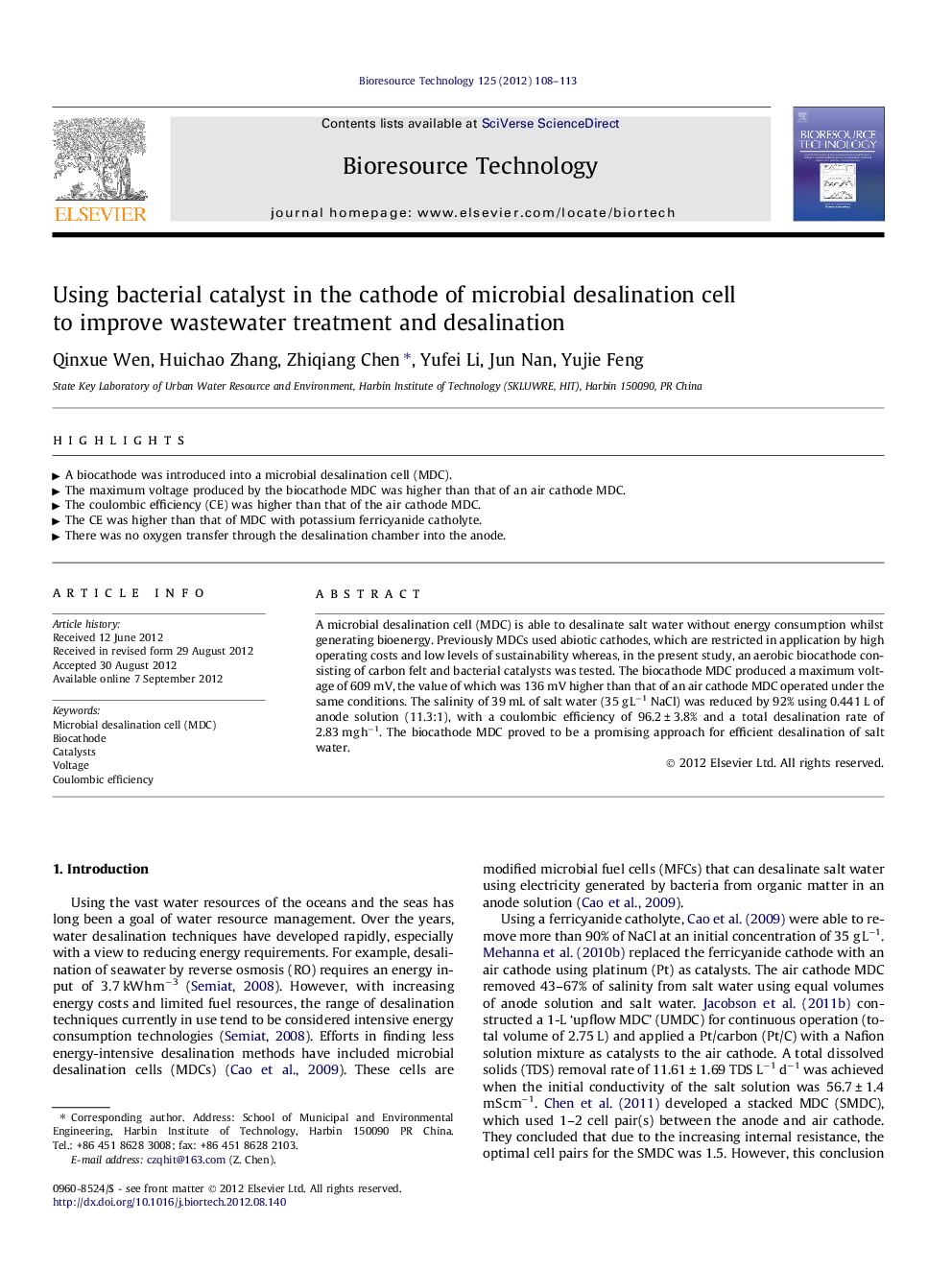| کد مقاله | کد نشریه | سال انتشار | مقاله انگلیسی | نسخه تمام متن |
|---|---|---|---|---|
| 681327 | 1460018 | 2012 | 6 صفحه PDF | دانلود رایگان |

A microbial desalination cell (MDC) is able to desalinate salt water without energy consumption whilst generating bioenergy. Previously MDCs used abiotic cathodes, which are restricted in application by high operating costs and low levels of sustainability whereas, in the present study, an aerobic biocathode consisting of carbon felt and bacterial catalysts was tested. The biocathode MDC produced a maximum voltage of 609 mV, the value of which was 136 mV higher than that of an air cathode MDC operated under the same conditions. The salinity of 39 mL of salt water (35 g L−1 NaCl) was reduced by 92% using 0.441 L of anode solution (11.3:1), with a coulombic efficiency of 96.2 ± 3.8% and a total desalination rate of 2.83 mg h−1. The biocathode MDC proved to be a promising approach for efficient desalination of salt water.
► A biocathode was introduced into a microbial desalination cell (MDC).
► The maximum voltage produced by the biocathode MDC was higher than that of an air cathode MDC.
► The coulombic efficiency (CE) was higher than that of the air cathode MDC.
► The CE was higher than that of MDC with potassium ferricyanide catholyte.
► There was no oxygen transfer through the desalination chamber into the anode.
Journal: Bioresource Technology - Volume 125, December 2012, Pages 108–113